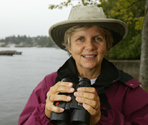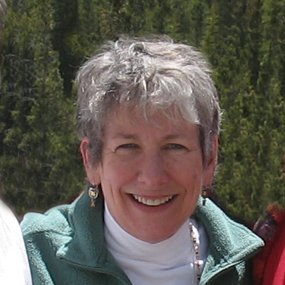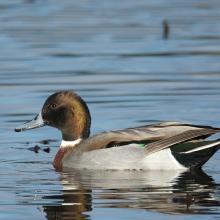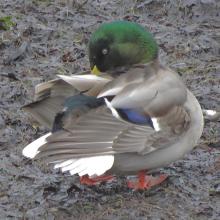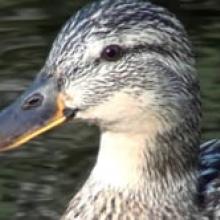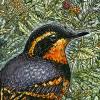

Join BirdNote tomorrow, November 30th!
Illustrator David Sibley and actor H. Jon Benjamin will face off in the bird illustration battle of the century during BirdNote's Year-end Celebration and Auction!
Birds' legs have an adaptation called "rete mirabile" that minimizes heat loss. The arteries that transport warm blood into the legs lie in contact with the veins that return colder blood to the bird's heart. The arteries warm the veins. Because the veins also cool the arteries, the bird’s feet are closer to environmental temperature and thus don’t lose as much heat as they would if they were at body temperature. And by standing on one leg, a bird reduces by half the amount of heat lost through unfeathered limbs. This American Avocet shows us how it's done.
BirdNote®
Why Birds Stand on One Leg
Written by Frances Wood, adapted by Ellen Blackstone
This is BirdNote!
[Quacking of Mallards]
Picture a duck — say, a Mallard — standing on just one leg. It’s a wonder it doesn’t tip over. [Female Mallard quacking]
Long-legged herons — as well as short-legged ducks, geese, hawks, and gulls —[Calls of Glaucous-winged gulls] often roost in a peg-legged stance while keeping the other leg tucked up into their body feathers for warmth.
On the beach, look for shorebirds balanced on one leg. On rare occasions, you may see sandpipers travel short distances, hopping crazily.
Birds have adaptations to manage heat loss. The arteries that transport blood into the legs lie in contact with the veins that return blood to the bird’s heart. The warm arteries heat the cooler veins. Because the veins also cool the arteries, the bird’s feet are closer to environmental temperature and thus don’t lose as much heat as they would if they were at body temperature.
And as for standing on one leg, do the math: a bird with its foot tucked up reduces by half the amount of heat lost through its unfeathered limbs.
[Chipping of Dark-eyed Junco]
During winter’s cold, look for sparrows and juncos fluffing out their feathers to cover both legs. And for extra warmth, they tuck their beaks under their shoulder feathers, but not under their wings, as people often say.
For BirdNote. I’m Michael Stein.
###
Bird sounds provided by The Macaulay Library at the Cornell Lab of Ornithology, Ithaca, New York. Mallards recorded by A.A. Allen [3420], Glaucous-winged Gull [3350] recorded by A.A. Allen, and chipping of Dark-eyed Juncos [130987] recorded by W.L. Hershberger.
Producer: John Kessler
Executive Producer:
© 2017 Tune In to Nature.org 2017 /2019 Narrator: Michael Stein
ID# 122806onelegKPLU oneleg-01c


